
Dornier 335517 viewsAs the Second World War in Europe drew to a close, a powerful new twin- engined fighter was preparing to enter service with the Luftwaffe. This amazing machine was the piston-engined Dornier Do 335. Fitted with Daimler-Benz DB603A-2 engines delivering 1750 hp at take-off, the first example, Do 335 V1 (CP+UA), flew for the first time on 26 October 1943 from Mengen, Wurttemburg, with Flugkapitan Hans Dieterle at the controls. When the US Army overran the Oberpfaffenhofen factory in late April 1945, only 11 Do 335A-1 single seat fighter-bombers and two Do 335A-12 conversion trainers had been completed. A further nine A-1's, four A-4's and two A- 12's were in final assembly, and components and assemblies for nearly 70 more had been completed. Heinkel at Vienna had been unable to build any Do 335A-6 night fighters.
|
|
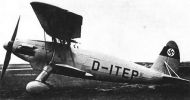
Arado Ar 68F516 viewsInitial deliveries of the Ar 68F were made to the Luftwaffe in the late summer of 1936. commencing with I/JG 134 'Horst Wessel'. By the outbreak of World War II most surviving Ar 68s had been relegated to advanced fighter trainer status with the Jagdflieger-schulen (fighter pilot schools).
|
|
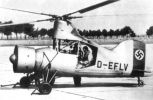
flettner-265515 views
|
|
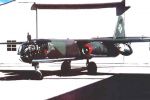
arado ar234509 viewsThe Ar-234 was originally conceived in early 1941 by an engineering team under Professor Walter Blume, director of the Arado aircraft company. Arado projected a maximum speed of 780 KPH (485 MPH), an operating altitude of almost 11,000 meters (36,000 feet), and a maximum range of 2,000 kilometers (1,250 miles). A total of 210 Ar-234Bs and 14 Ar-234Cs were delivered to the Luftwaffe, but with Germany in chaos, only a handful ever got into combat. A final inventory taken on 10 April 1945 listed 38 in service, including 12 bombers, 24 reconnaissance aircraft, and 2 night fighters. These aircraft continued to fight in a scattered and ineffective fashion until Germany surrendered on 8 May 1945. Some were shot down in air combat, destroyed by flak, sometimes their own, or bounced by Allied fighters when they came in to land.
|
|
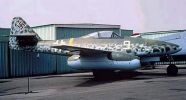
Messerschmitt Me 262 Schwalbe496 viewsThe Me 262A-1a "Schwalbe" ("Swallow") was the first production model of the Me 262. It was produced with four Mk 108 30mm cannon mounted in the nose, in its role as an interceptor, a role that it performed with great promise. it came into the battle far too late, when the Allied air forces had reached formidable capacity; secondly, its engines were a constant source of trouble, frequently failing after no more than 12 hours; the Me 262A-2a "Sturmvogel" ("Stormbird") was reconfigured to carry two 550lb bombs, still retaining the four cannon. A further refinement, Me 262A-2a/U1 had two of the cannon removed to provide space for a bomb-aiming device, and Me 262A-2/U2 carried a prone bombardier in the nose section. Thus, for much of the aircraft's brief combat life, it was used against the wrong type of targets, with even less effect than if it had been used as an interceptor.
|
|
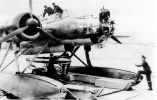
Heinkel He 115494 viewsThe He 115, constructed as a twin engine plane was very effective in it's role as mine-layer and torpedo-bomber (first flight in 1936).
In 1940 the He 115B saw service as a mine-layer, carrying a single magnetic mine of 920 kg. Airplanes of Küstenfliegergruppe 106 und 406 flew on a regularly basis mining missions at the east and south coast of Great Britain. At the end of 1940 the He 115 C appeared with heavy armament; a subversion had improved skids for landings on ice and iced snow. The C-4 was a version specialised for torpedo-attacks, which was used several times against the north-cape convoys.
|
|
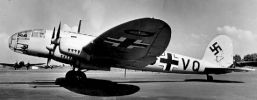
Heinkel He 116493 viewsThis aircraft was designed in 1936 as a high altitude aircraft for Lufthansa. The specified Hirth powerplants were not available and the V1 flew in 1937 on lower rated engines. Eight A-series mail carriers were built followed by the He 116R with rocket boost. The He 116R later flew 6,214 (10,000km) on June 30, 1938 non-stop. Six B-0 were delivered to the Luftwaffe in 1938 as long range photo recon aircraft but their low speed, lack of pressurization and lack of armament made them too vulnerable to use in enemy airspace and these airframes spent the remainder of their careers doing photographic work over Germany.
|
|
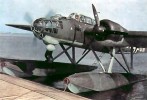
Heinkel He 115487 viewsThe He 115, constructed as a twin engine plane was very effective in it's role as mine-layer and torpedo-bomber (first flight in 1936).
In 1940 the He 115B saw service as a mine-layer, carrying a single magnetic mine of 920 kg. Airplanes of Küstenfliegergruppe 106 und 406 flew on a regularly basis mining missions at the east and south coast of Great Britain. At the end of 1940 the He 115 C appeared with heavy armament; a subversion had improved skids for landings on ice and iced snow. The C-4 was a version specialised for torpedo-attacks, which was used several times against the north-cape convoys.
|
|
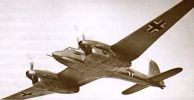
Focke-Wulf 187480 viewsThis plane was excellent when it appeared, but ignored in favor of the Bf110. The pilots in Norway were enthusiastic about its potential and demanded quantity production, but instead they were ordered to give the planes back to Focke-Wulf because they were only in inofficial use. Some Fw187 were also used in the aerial shooting school in Vaerlose, Denmark.
In the facility defense role, they shot down several aircraft. Remarkable was the great maneuvrability; the Rechlin test pilot Heinrich Beauvais was of the opinion that it circled comparable to the Bf109 and rolled only slightly slower than the Bf109, while spped and range were superior. But the disastrous (but good-looking) Me210 and Me410 design was preferred by the air ministry
|
|
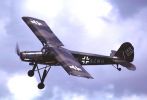
Fieseler Fi 156 Storch478 viewsThe Storch was first flown in 1936. The fabric-covered Storch observation monoplane served the German Forces throughout World War Two wherever the Germans saw combat. With ten times the life expectancy of the Bf 109 fighter, the Storch ("Stork") proved to be a rugged Short Take Off and Landing (STOL) airplane that gained the respect of all its pilots. Over 2,900 Fi 156s were produced. Today, more than 30 Fi 156s and their brethren have survived in Europe and North America, and about 20 are still capable of flying today.
|
|
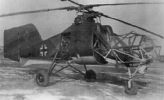
Fl282-1473 views
|
|

focke wulf 189471 viewsThe Focke Wulf 189 was a reconnaissance aircraft which served with the Luftwaffe (German Airforce) during World War II. Only 846 were built.
The 189 was used mainly on the Eastern Front and was known both as ‘The Flying Eye’, due to the superb all-round vision afforded by its distinctively glazed fuselage, and as the Uhu (Owl). The 189C was an attempt by Focke Wulf to build a ground attack version of it's successful recon plane.
|
|
|
|